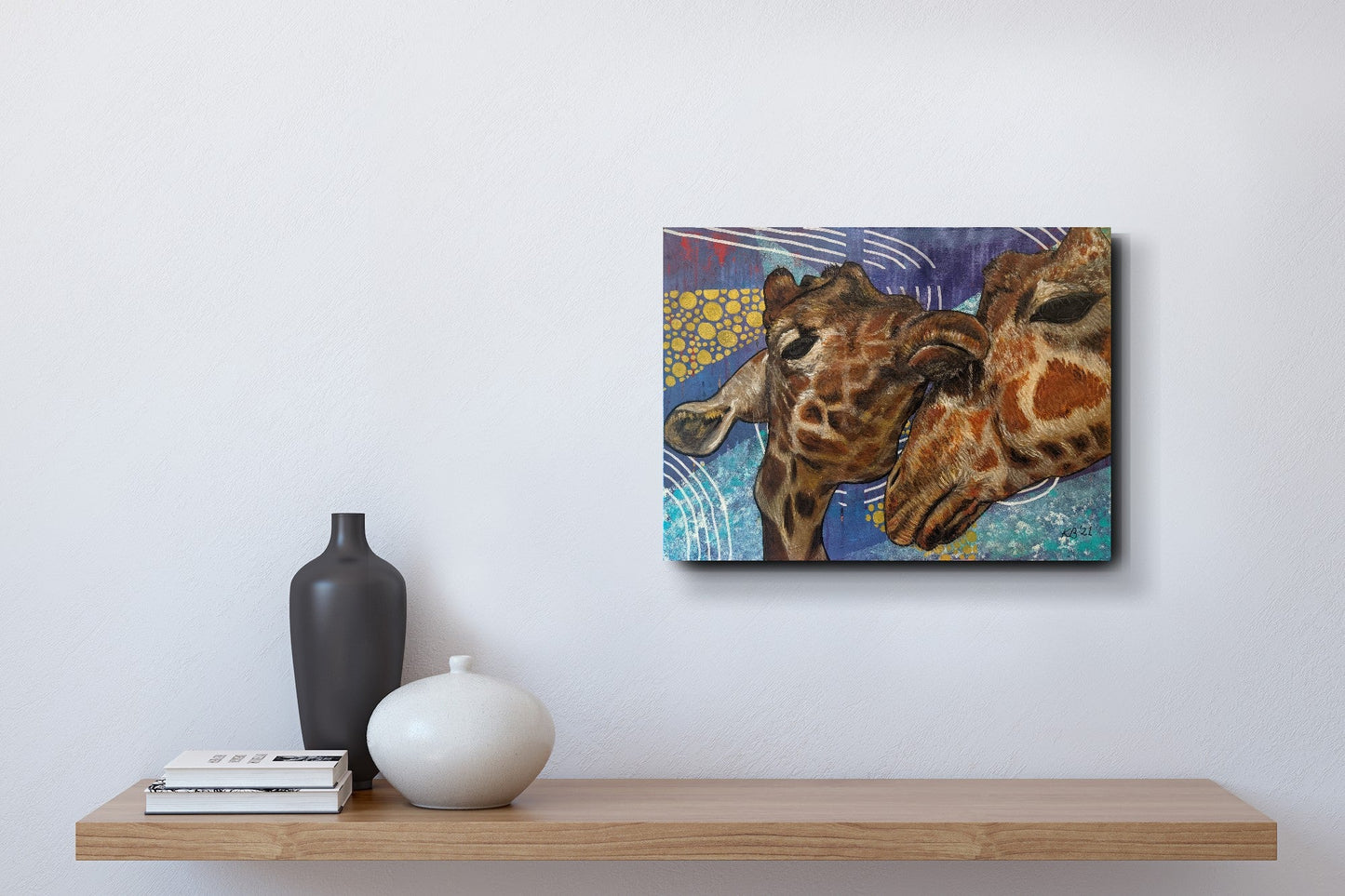Kelly Batsiokis Art
Giraffe Kisses
Giraffe Kisses
Couldn't load pickup availability
Share
With its lanky build and mottled coat, the giraffe has been a source of fascination throughout human history, and its image is widespread in culture. It has been used to symbolise flexibility, far-sightedness, femininity, fragility, passivity, grace, beauty and the continent of Africa itself.
Giraffes were depicted in art throughout the African continent, including that of the Kiffians, Egyptians, and Kushites. The Kiffians were responsible for a life-size rock engraving of two giraffes, dated 8,000 years ago, that has been called the "world's largest rock art petroglyph". How the giraffe got its height has been the subject of various African folktales. The Tugen people of modern Kenya used the giraffe to depict their god Mda. The Egyptians gave the giraffe its own hieroglyph, named 'sr' in Old Egyptian and 'mmy' in later periods.
Giraffes have a presence in modern Western culture. Salvador Dalí depicted them with burning manes in some of his surrealist paintings. Dali considered the giraffe to be a symbol of masculinity, and a flaming giraffe was meant to be a "masculine cosmic apocalyptic monster". Several children's books feature the giraffe, including David A. Ufer's The Giraffe Who Was Afraid of Heights, Giles Andreae's Giraffes Can't Dance and Roald Dahl's The Giraffe and the Pelly and Me. Giraffes have appeared in animated films, as minor characters in Disney's The Lion King and Dumbo, and in more prominent roles in The Wild and the Madagascar films. Sophie the Giraffe has been a popular teether since 1961. Another famous fictional giraffe is the Toys "R" Us mascot Geoffrey the Giraffe.
The giraffe has also been used for some scientific experiments and discoveries. Scientists have looked at the properties of giraffe skin when developing suits for astronauts and fighter pilots because the people in these professions are in danger of passing out if blood rushes to their legs. Computer scientists have modelled the coat patterns of several subspecies using reaction–diffusion mechanisms. The constellation of Camelopardalis, introduced in the seventeenth century, depicts a giraffe. The Tswana people of Botswana traditionally see the constellation Crux as two giraffes—Acrux and Mimosa forming a male, and Gacrux and Delta Crucis forming the female.
These giraffes would suit a small space!
The abstract geometric background is another element of interest. Could even suit a child's room with a safari theme!
Please be advised colours may appear differently on different devices.
This is an original acrylic painting, 61cm x 46cm x 3.8cm, with white edges and ready to hang.
Framing can be arranged for a fee, on request.
Enquire for international shipping quotes.









-
Shipping
Shipping Policy- Pricing includes FREE Australian shipping.
- Stretched and framed artwork will not ship internationally by default. Please enquire for a quote.
-
Returns
Refund PolicyReturns will not be accepted unless the item is damaged, faulty or incorrectly shipped. Evidence will be required.









